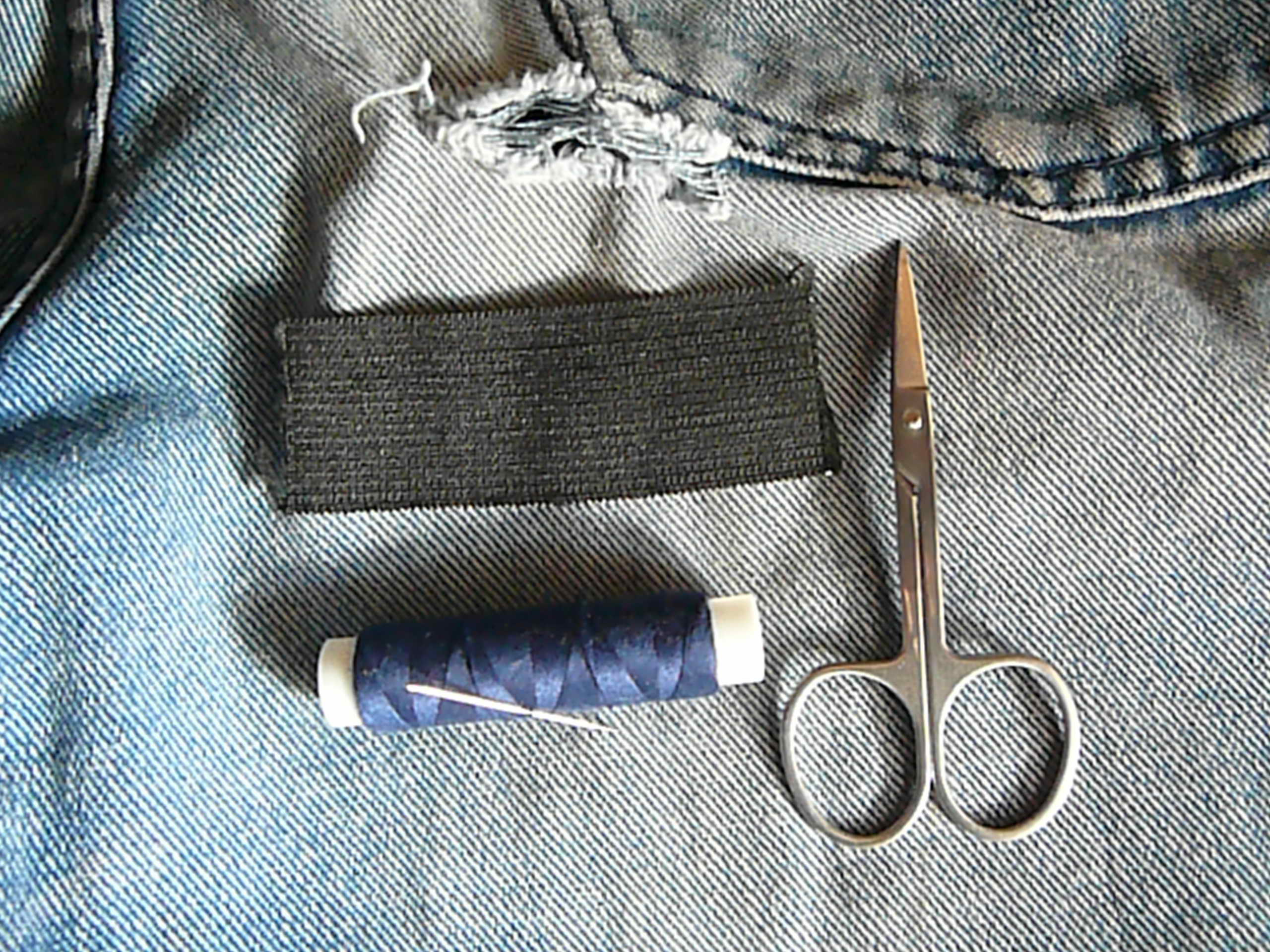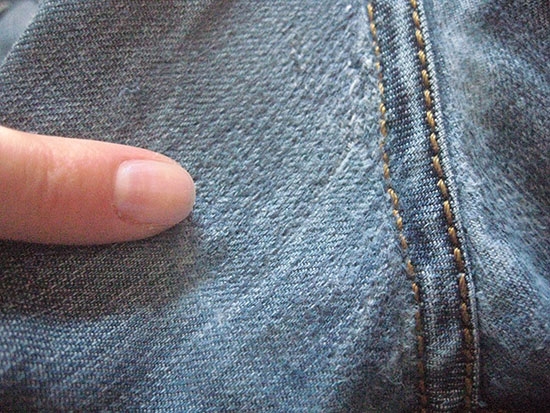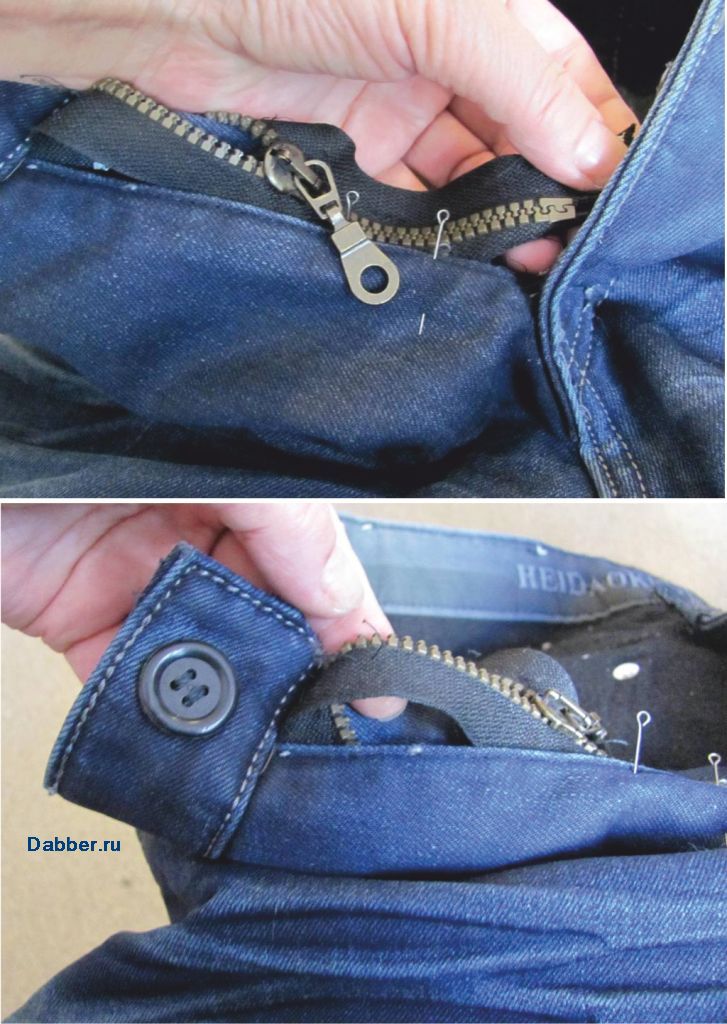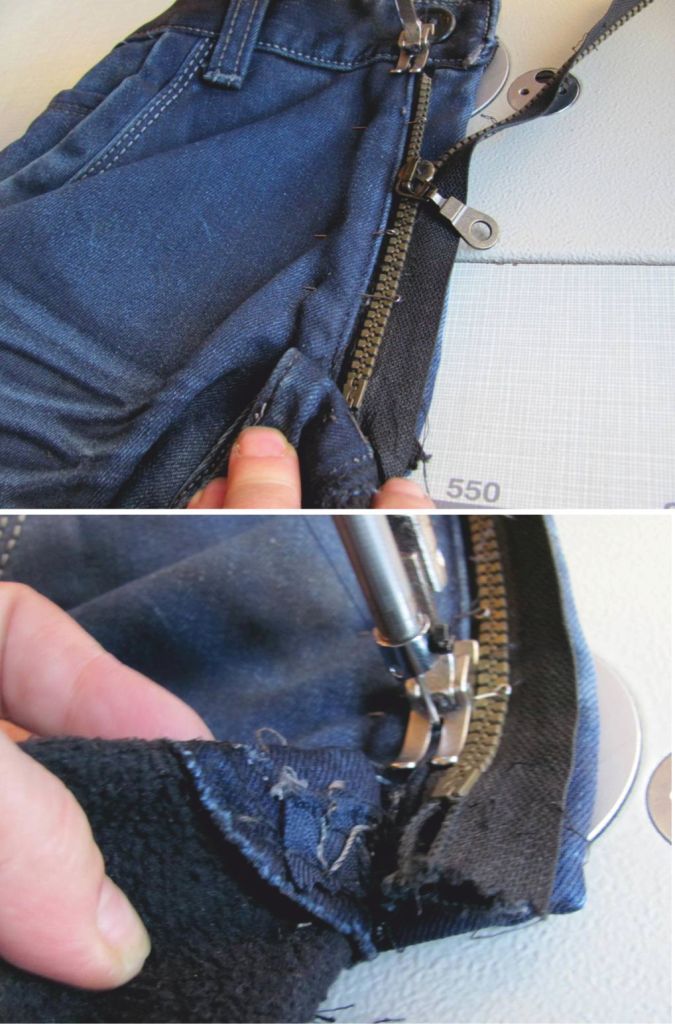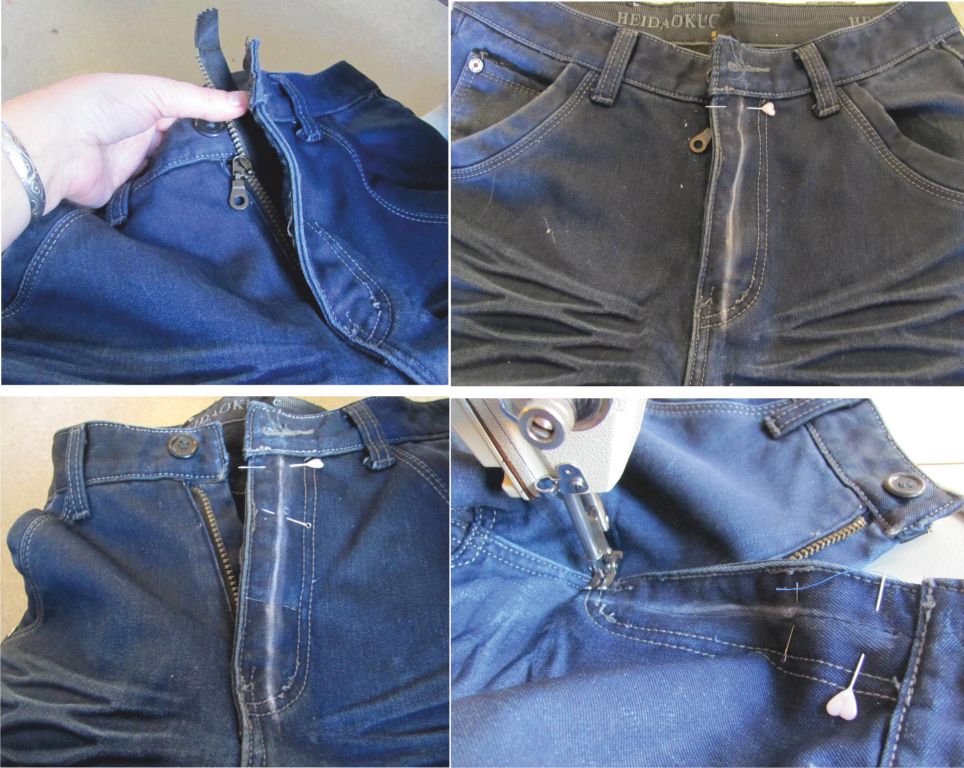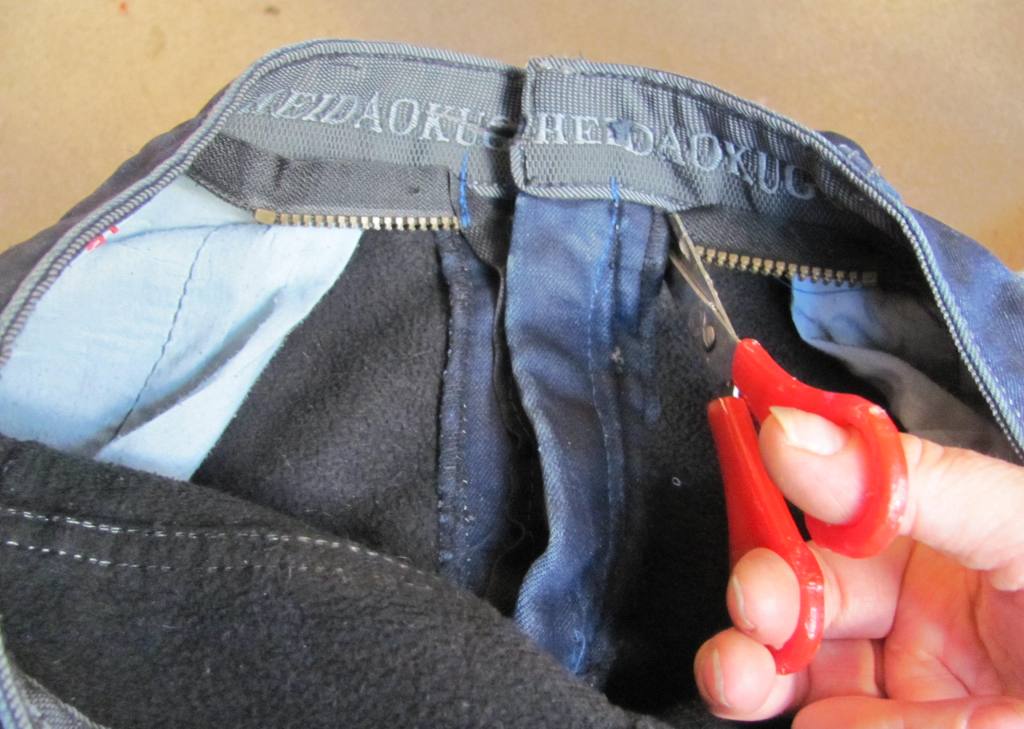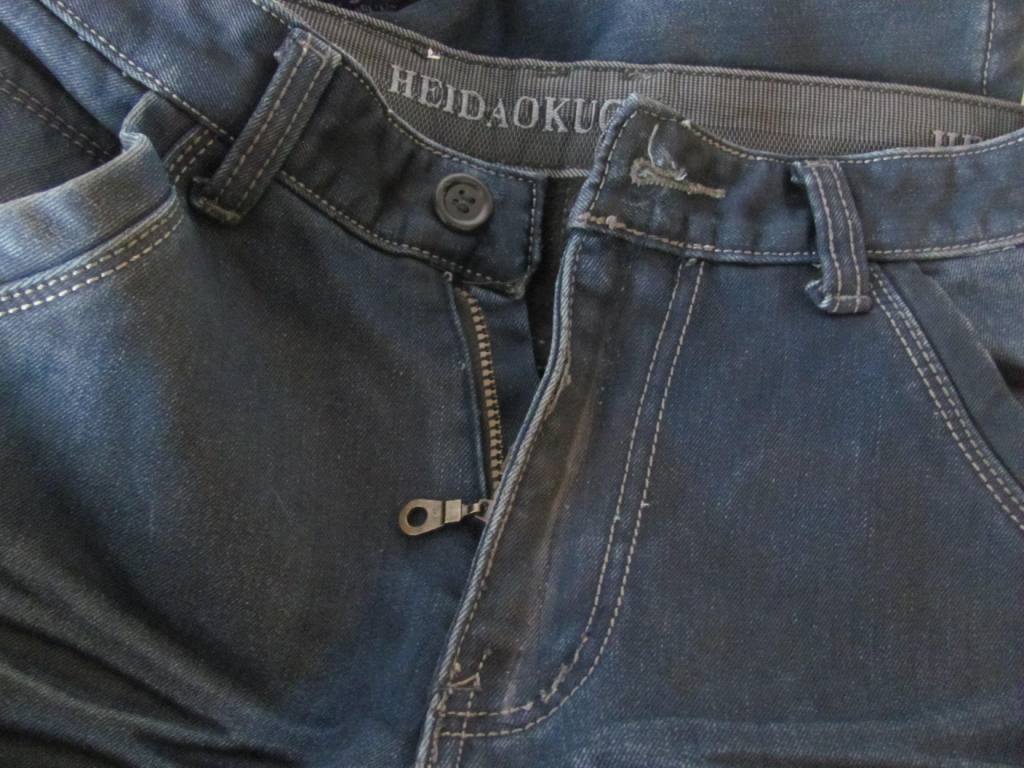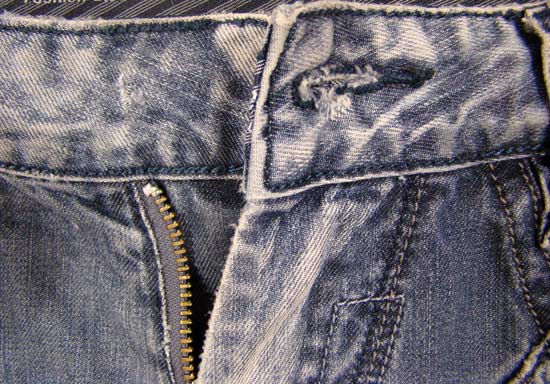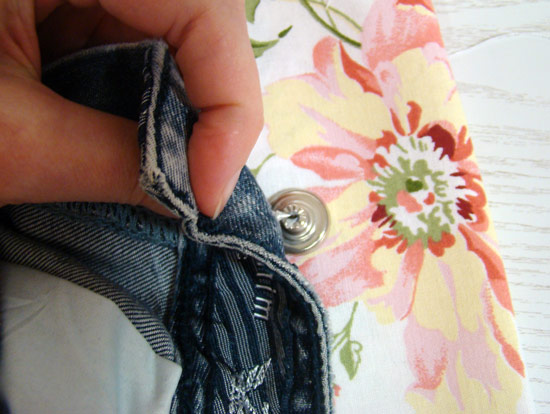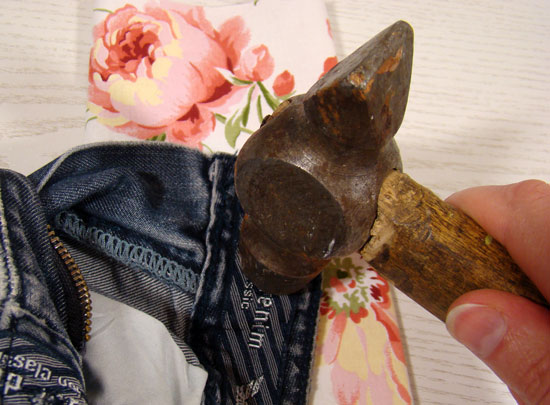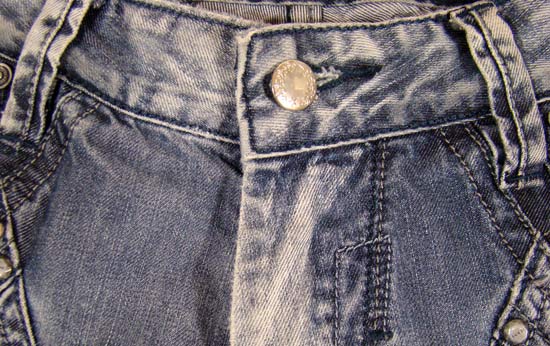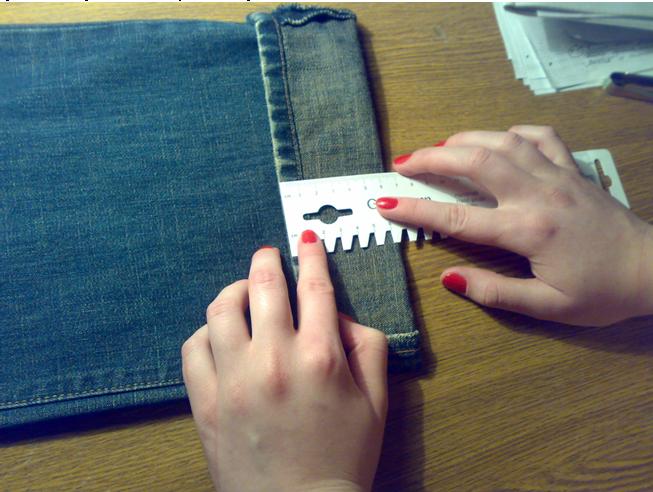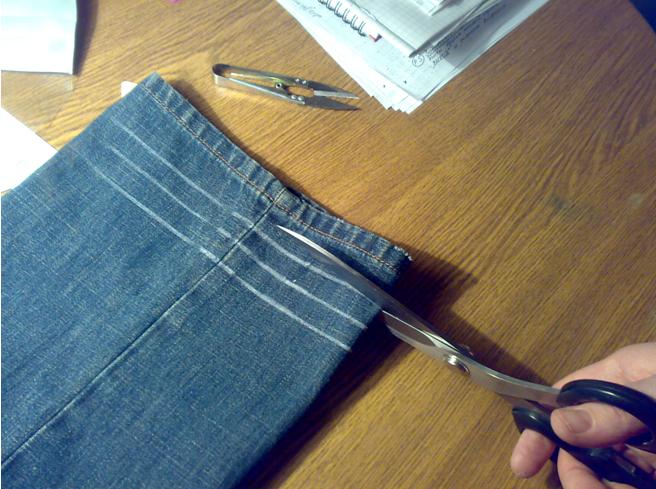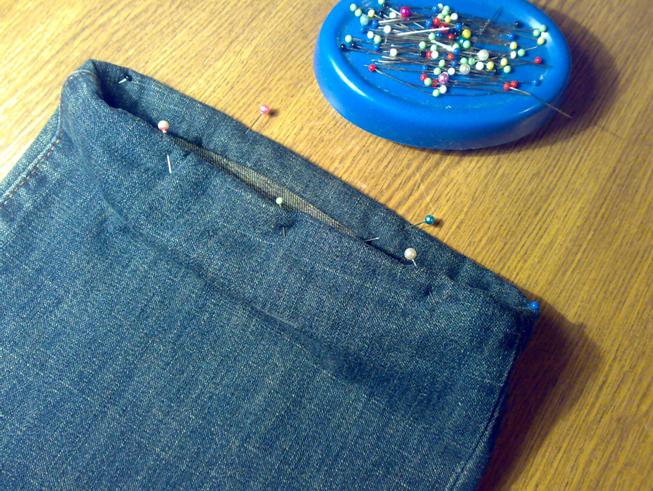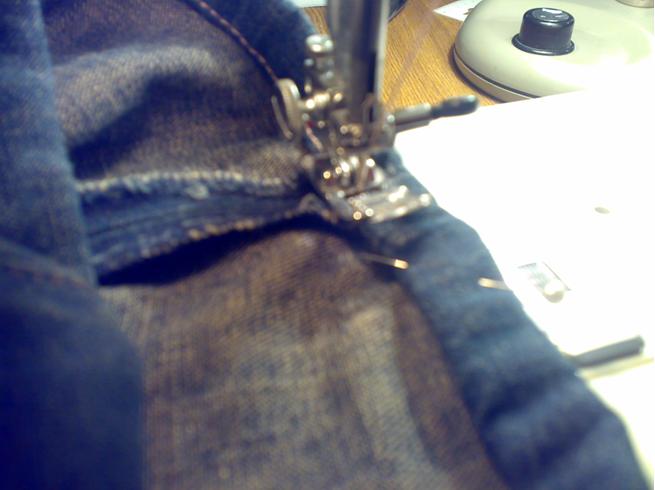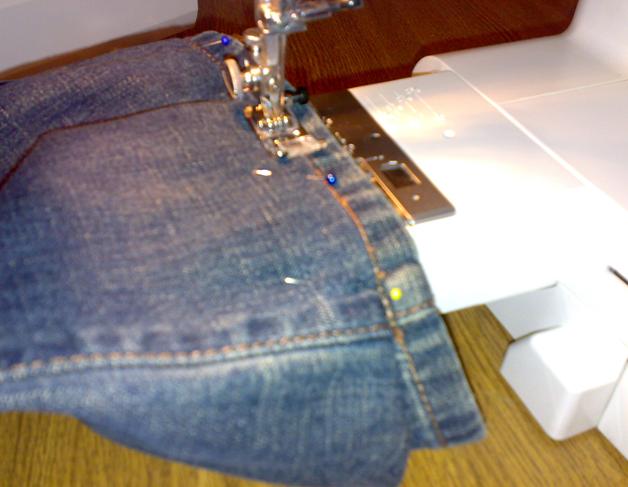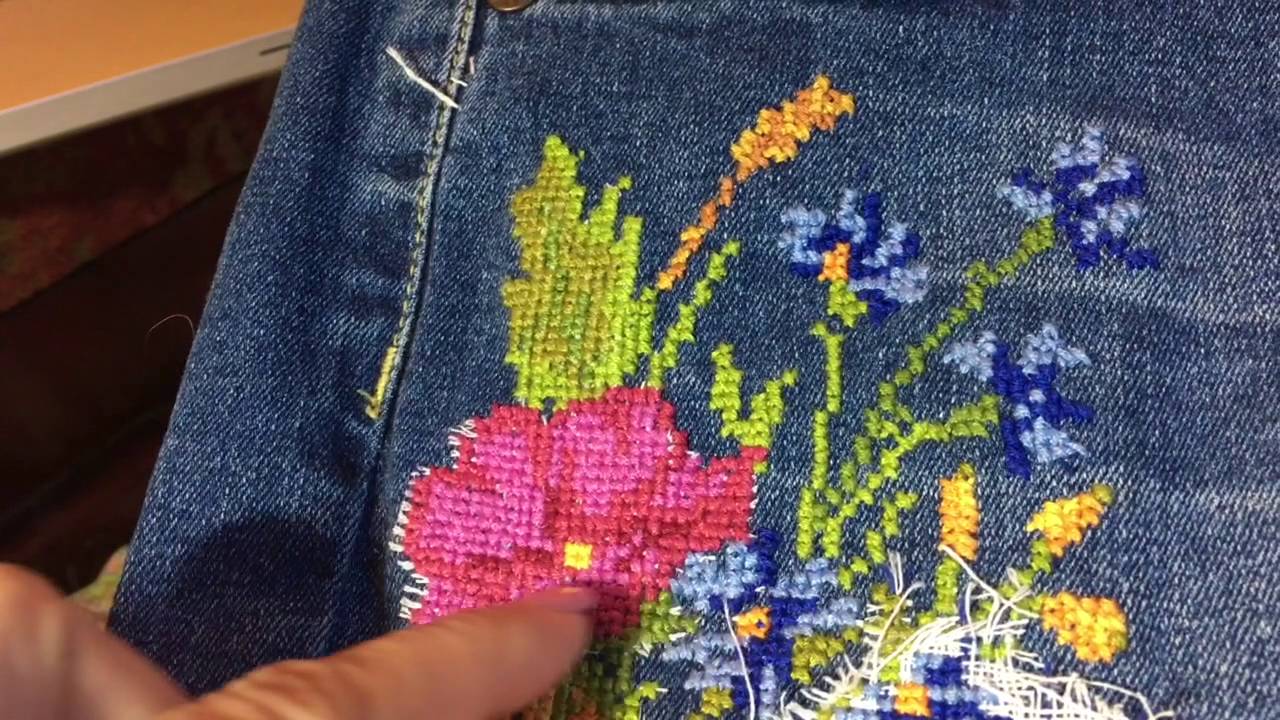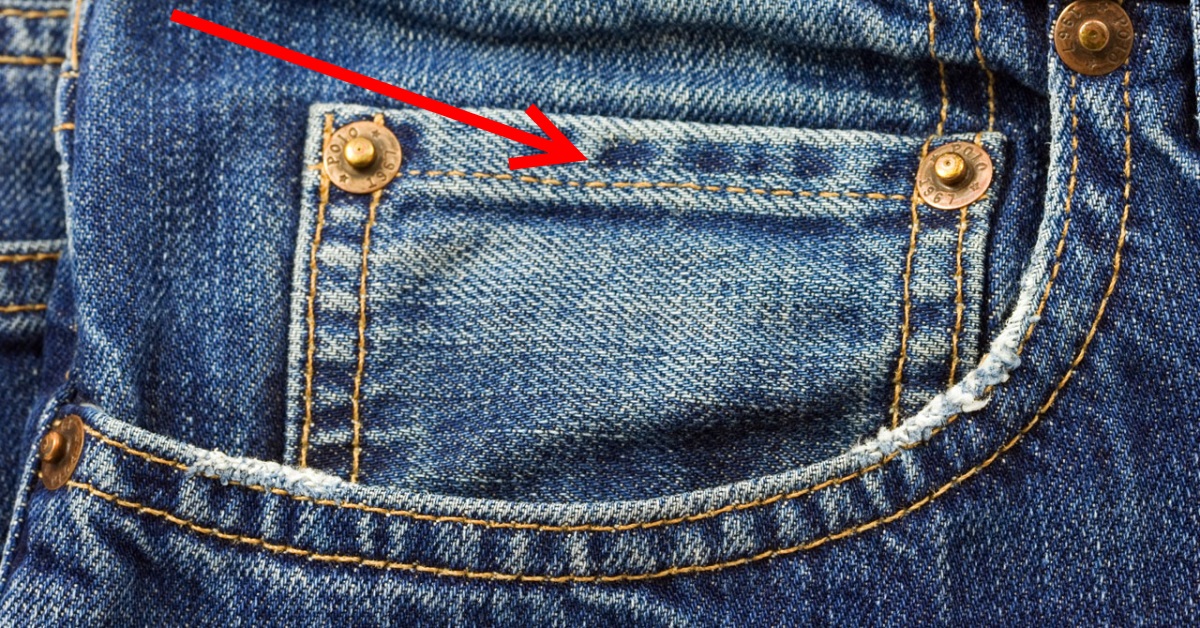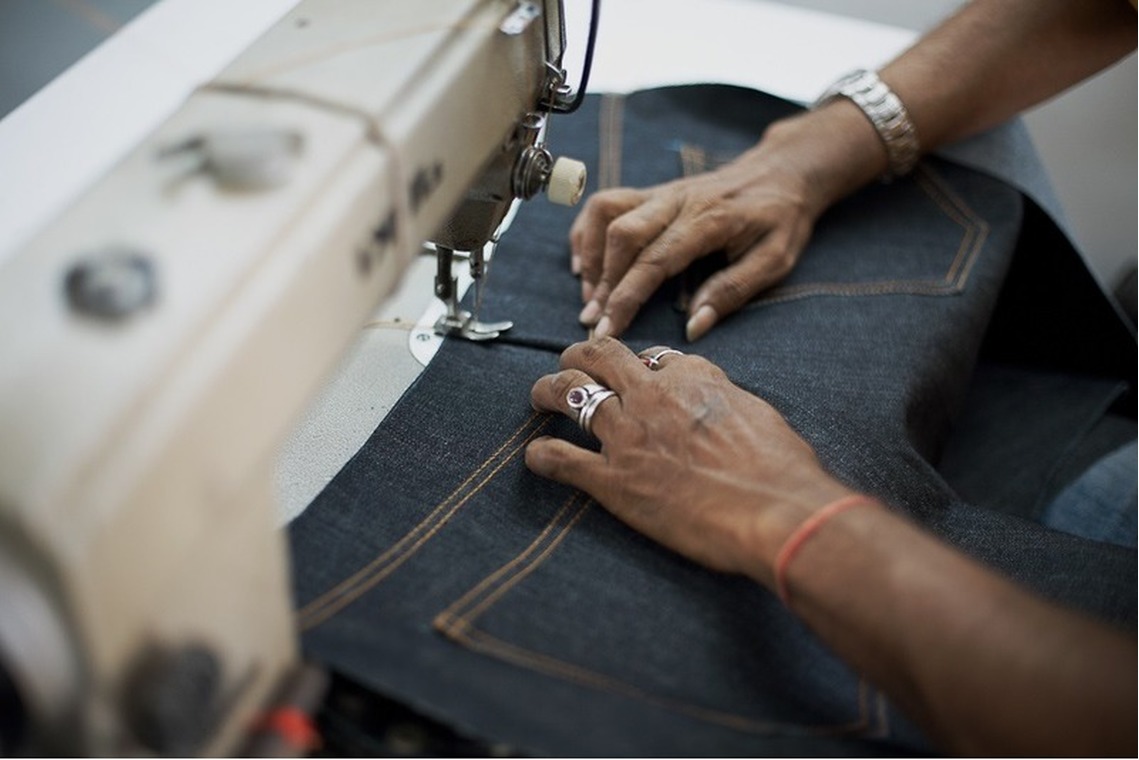People prefer to repair things for different reasons. For some, the financial issue plays a role, for example, active children often have their jeans torn, and there is no way to buy new ones. The second category of people does not throw away an old thing because of habit or because it carries some memory. It is not easy to find well-fitting jeans, so jeans repair is the most popular type of repair. Unlike classic models, various types of patches and darning look harmonious on jeans. You can give the item to a studio for repair or do it yourself.
Plastering
The process that bears this name is the application of an invisible patch from the reverse side. This can be done by hand, but is easier to do with a sewing machine.
- for a patch, you can buy a special patch fabric, which is sold in any sewing store. Its advantage is that it has an adhesive base. If this is not possible, then lining or denim material is used. You will also need threads that match the color of the area that needs repairing;
- The jeans need to be turned inside out and a patch needs to be attached to the hole. The patch material is placed on the torn area and glued with an iron. It is recommended to use the cotton steam mode. If the seamstress only has regular fabric, it will need to be basted;
- the machine is loaded with selected threads and the stitches are applied in a zigzag pattern, switching between forward and reverse movements. The seams should be perpendicular to the tear. If the wear is only beginning, the stitches are made rare. For large holes, it is better to go through a frequent zigzag;
- The last step is to untie the fixing threads and turn it inside out.
Patches
The second option for repairing jeans with your own hands is a patch. The time when a piece of fabric was simply placed on a hole and sewn on is long gone; now it looks unaesthetic and cheap.
The patch will be completely invisible if you use a tone-on-tone material or a piece of the same jeans. It should be applied and sewn on from the wrong side. To prevent the fabric from shifting during the process, it will need to be fixed with basting or safety pins. It is better to sew or overlock the edges of the hole to be sure that it does not spread further. The patch is stitched along the edges of the tear.
A colored applique is also used as a patch; such accessories are sold in stores. You can also come up with something yourself, the main thing is that the fabric is dense. Such patches are sewn over the hole.
A new trend is iron-on patches. This is the same applique, but you don’t need to sew it on, it will be enough to attach it to the hole and iron it with a hot iron.
Replacing the zipper and buttons
Such types of defects in jeans are definitely not worth getting rid of your favorite pair. Such small defects are very easy to fix, and after replacement, the button or zipper is indistinguishable from the "original" one.
Replacing the snake:
- First, you need to rip out the old jeans zipper. To do this, unpick the finishing stitching that covers the zipper on the front side and the stitches on the waistband;
- If possible, a new zipper of the appropriate size should be installed in place of the old one, using the traces of the old stitches as a guide. To fix it, baste it;
- the lock is stitched on one side along the tape with two parallel lines. It is important that the zipper stopper does not get under the sewing machine foot, it is better to bend it back and pin it;
- at the next stage, the second half of the zipper is sewn in. The zipper needs to be unfastened, and the free side should be tacked to the part of the jeans where the button is;
- the zipper is sewn into place with two lines;
- from the beginning of the fly to the waistband, two rows of stitches are sewn in a semicircle - these are finishing lines;
- and it is also necessary to restore the ripped lines on the belt and secure the zipper fly from the inside. It is important that any machine lines must be secured at the beginning and end.
Replacing a regular button is not difficult, but how to repair a button on jeans? Many housewives mistakenly believe that only a tailor shop can solve this problem, but this is not true:
- The remaining parts of the old button are removed, usually the shank of the product. This is done using side cutters;
- When choosing a replacement, it is best to choose a model made of steel or aluminum on a fixed leg. And at home, the easiest buttons to install are those on a nail with a circular notch;
- after removing the button, you need to inspect its location. If it is badly torn, you won't be able to put a replacement here. You will need to move the leg 5 mm to the side and sew up the existing hole. If this is not possible, you need to cut a lining out of leather or plastic twice as wide as the diameter of the nail head. And then put it under the head from the inside before installing the button;
- in the proposed replacement location, a puncture is made with an awl and a nail is installed;
- The button is screwed onto the shank and driven in with a hammer, like a nail.
Thus, repairing a button on jeans is easy and can be done independently.
Hemming and tapering
Fashion changes rapidly, so giving a new life to an outdated model of jeans is a great and practical idea. Short and skinny jeans are in fashion now. First, the length is cut off, then the width of the legs is sewn in.
To hem jeans to any length, you need to put on your shoes and roll up the leg to the desired length, then mark the fabric with chalk. After taking off your jeans, you will need to measure this distance with a tape measure and then use a ruler to repeat this segment along the diameter. From the resulting line, set aside 2 cm down, this length will go to the hem. Cut off the excess along the second line, then fold the hem and baste. Having selected threads to match the color, stitch the fabric once. At the end and at the beginning of the line, fasten.
For tapering, it is best to sew along the inner sides of the legs, on the outer ones there are finishing lines. For the procedure, you will need to rip the bottom of the jeans, then put them on the owner and measure the places that require sewing. The fabric is fixed with safety pins.
After removing the jeans, a line is drawn along the marks on a flat surface, it should be without sharp transitions. From this line, you will need to set aside 1.5-2 cm, they are needed for the stitching. The remaining excess fabric is cut off. The edges of the allowances must be processed on an overlock. Using a sewing machine, the product is sewn.
Embroidery and artistic darning
Embroidery can hide defects such as small holes or stains on the fabric. For this procedure, floss threads are used. The sketch can be applied in several ways:
- using carbon paper;
- with a washable marker;
- the sketch is applied to non-woven fabric, cut out and attached to the required location;
- use of overlay canvas - after completion of the process it is pulled out of the embroidery.
Artistic darning is a real art and is difficult for a beginner to do. Its essence is that the damaged fabric is restored using skillfully selected threads or they are taken from an inconspicuous area of the jeans. This operation is performed manually.
But artistic darning can also be done on modern sewing machines. A special material, like canvas, is placed on the hole in the fabric, and embroidery will be applied on top of it. This may require certain skills.
Remaking into shorts
If the bottom of the legs or knees are so hopelessly damaged that it is not possible to repair the jeans, you can remake them into shorts. Before cutting, the item should be washed, this will protect its owner from an unpleasant surprise - shrinkage. The process is no different from the usual hemming of jeans. The difference is in the number of centimeters cut off.
If you plan to have fringe at the bottom of the shorts, you need to add a couple of cm to the chosen length.
Common mistakes
When working with denim, there are some common mistakes that you can try to avoid:
- when it is said that you need to match the threads to the color, this is exactly what is meant. Even a slightly different tone on large sections can give the product a cheap and home-made look;
- the use of patches should be careful, do not think that it does not matter how the fabric gathers under it. The protruding areas will be visible under the applique, folds will form;
- When choosing a replacement button, it is easiest to focus on the diameter of the old one. Otherwise, you will have to rip or sew up the loop on the belt of your jeans;
- Some seamstresses are lazy and do not shorten the zipper if it is several cm longer than it should be. The extra length will interfere with wearing and stitching. Therefore, before sewing in the zipper, it must be shortened.
The final result depends on the owner's accuracy, diligence and imagination. But in general, all the above repair and remodeling methods are simple and require only attention during the process.
Video

